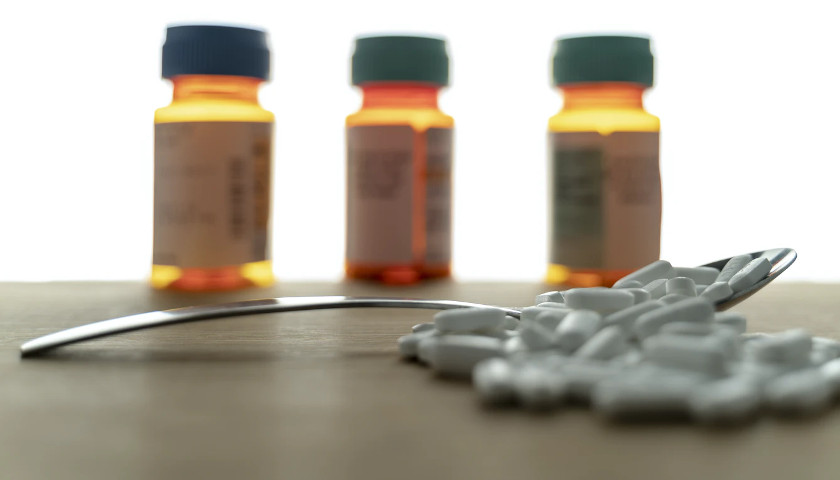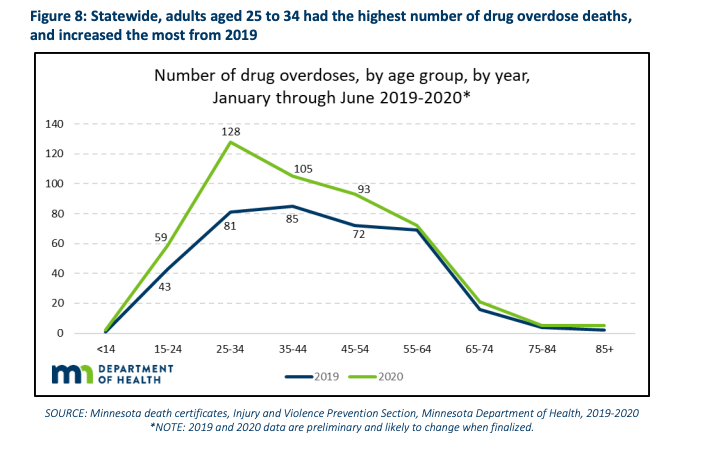by Scott McClallen
Previously unseen costs of the COVID-19 pandemic and its associated lockdowns are coming to light.
Drug overdose deaths increased 31% during the first half of 2020 compared to the first half of 2019, according to new data released by the Minnesota Department of Health (MDH).
From January to June in 2019, 373 Minnesotans died of a drug overdose.
But during the same time in 2020, 490 people died of a drug overdose – an increase of 117 deaths.
Drug overdose deaths in 2020 increased sharply in March – coinciding with the COVID-19 outbreak and accompanying economic shutdown orders.
Approximately 80% of all opioid-involved deaths in this period involved synthetic opioids.
MDH Commissioner Jan Malcolm said there’s help for anyone suffering from addiction during the COVID-19 pandemic.
“Deaths due to overdoses are preventable even amid all the troubles we’ve had this year,” Malcolm said.
“We need to work together to find ways to better support those suffering from substance use disorders, but it is important to know that there are resources available and those resources can still be accessed safely even with COVID-19 restrictions in place.”
Minnesotans ages 25 to 34 experienced the most significant increase of drug overdose deaths from January through June 2019 from 81 to 128 deaths – a 58% spike.
But the number of drug overdose deaths also increased in the following age groups: 15 to 24; 35 to 44; and 45 to 54.
Minnesotans who need help with drug addiction can find resources here.
For all drug-type death categories, the numbers were higher in the first half of 2020 compared to 2019.
The increase in drug overdose deaths wasn’t isolated to rural or metropolitan areas.
In the Twin Cities area, drug overdose deaths increased 29% from January through June 2019 (248) compared to the same period in 2020 (319).
Drug overdose deaths in Greater Minnesota increased 36% from January through June 2019 (124) compared to the same period in 2020 (169).
MDH Public Information Officer Julie Bartkey told The Center Square that a number of factors — including an increased presence of synthetic opioids (illicitly manufactured fentanyl) and methamphetamine, economic stress, isolation, and potential barriers to substance use disorder and recovery support services — could contribute to the the increase in overdose deaths.
Bartkey warned that this data only shows six months of data, so it’s not yet a complete picture of 2020 and suggested not drawing any conclusions from any one factor.
A full report on 2020 data is anticipated next year.
The Drug Overdose Dashboard contains data about responding to an opioid emergency and receiving the overdose drug naloxone.
– – –
Scott McClallen is a staff writer covering Michigan and Minnesota for The Center Square. A graduate of Hillsdale College, his work has appeared on Forbes.com and FEE.org. Previously, he worked as a financial analyst at Pepsi.






